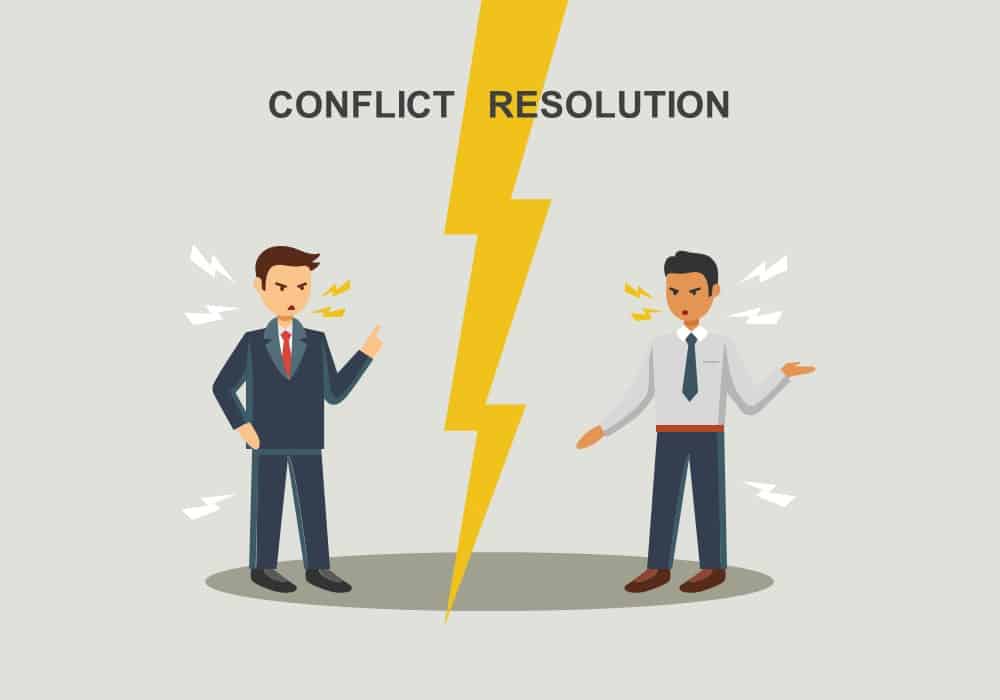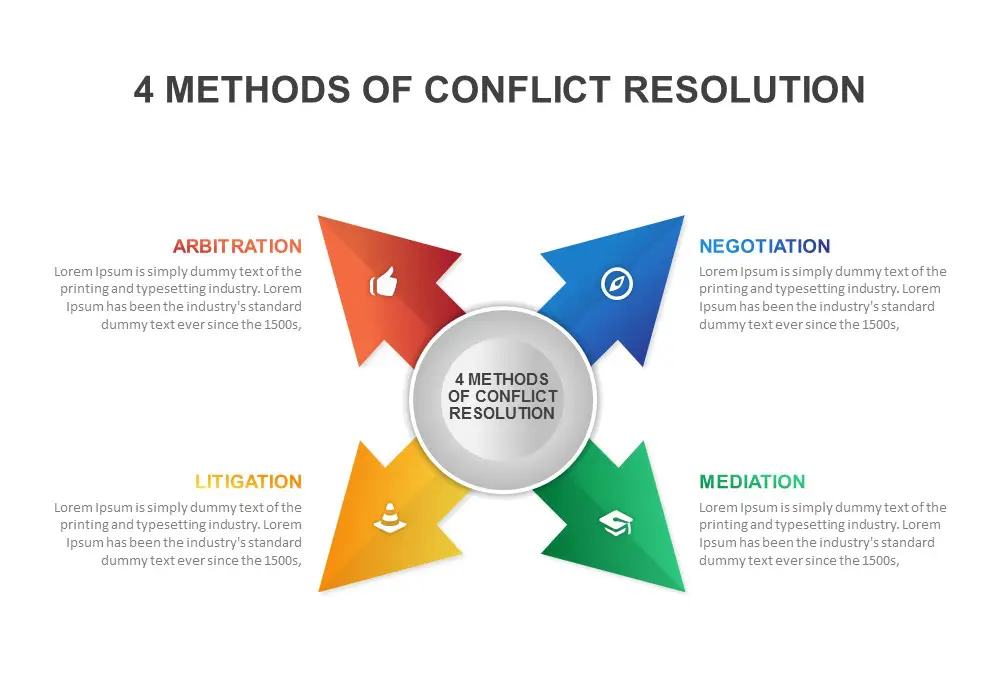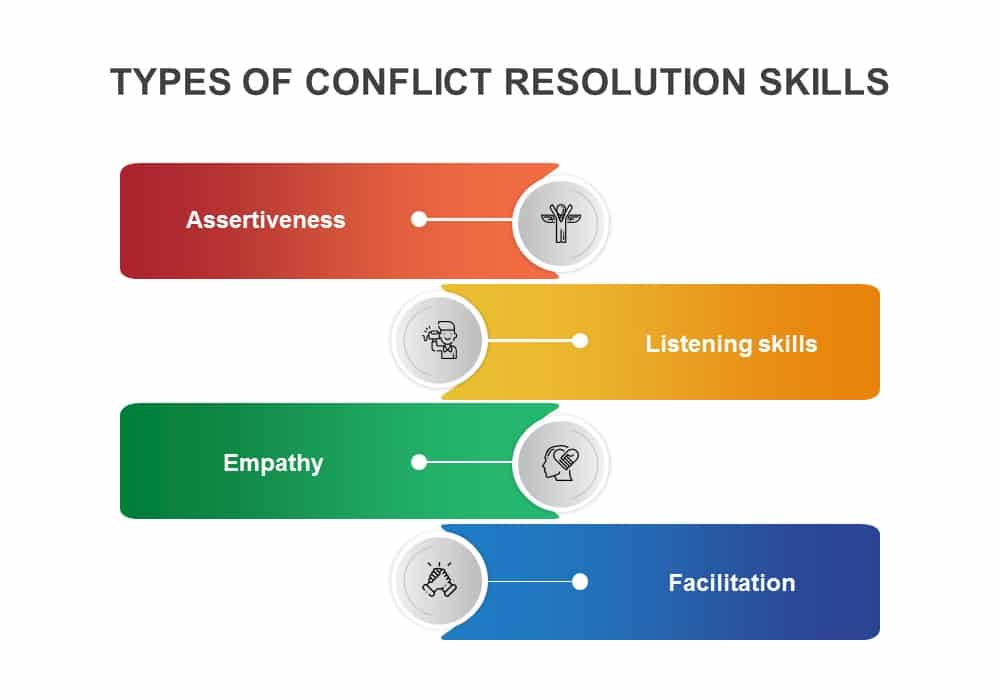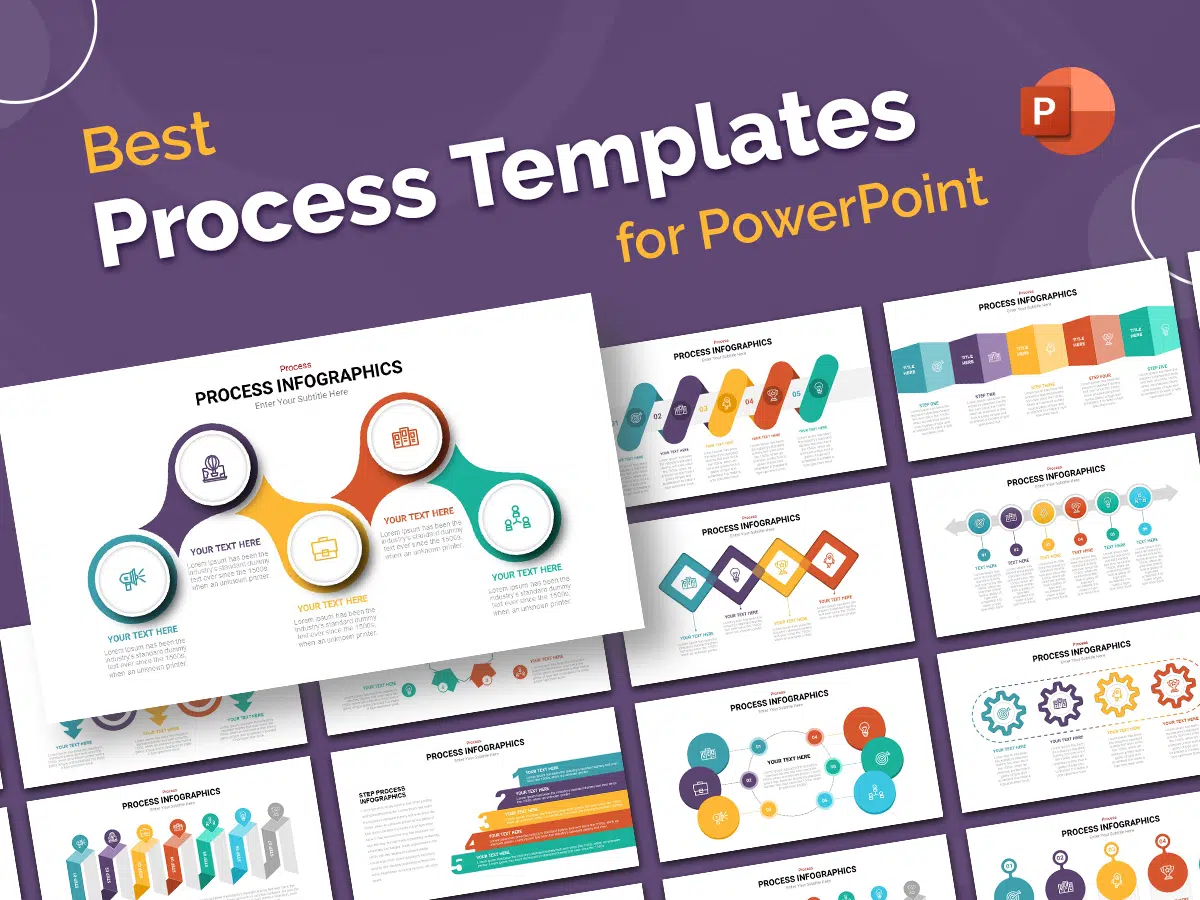Conflict Resolution Explained

[Psssst… Are you looking for an editable copy of the above image? Scroll down to the end of the article to download it for free!]
Conflicts are an integral part of human society. We cannot predict how and when a conflict might occur. The conflict between concepts or ideas may lead to the creation of new concepts. However, the conflict between a manager and staff may create productivity loss and adverse effects on the organization. To tackle these situations, the organization should look for conflict resolution strategies.
Conflict resolution skills are needed for a wide range of positions across many job sectors. This requirement is based around the fact that conflict tends to reduce productivity and generate a difficult work environment, leading to undesirable turnover in staff and reduced confidence. Persons who are able to resolve conflicts are often outstanding mediators, logical, and able to manage difficult personalities from a place of empathy. But it is better to solve a conflict by using the skills owned by ourselves. If the conflict is beyond the reach of our hands, we can entrust a third person.
What is conflict resolution?
Simply said, conflict resolution is the process by which two or more parties reach a peaceful resolution to a disagreement or a dispute. The dispute may be personal, financial, political, or emotional.
Conflict may occur between supervisors and subordinates, between co-workers, between service providers and their clients, or customers. Conflict can also occur between groups, such as employees and management, or between whole departments.
If you want to solve a conflict, you should know the place of origin. Without knowing the causes of conflict we can’t resolve it. When a dispute arises, often the best course of action is conciliation to resolve the disparity.
Without an arbitrator, you can’t solve some disputes, solving a dispute never considered as a fail or a win.
Process of conflict resolution (for business managers)
The resolution of conflicts in the workplace includes some or all of the following processes:
1. Recognition by the parties involved that a problem exists
2. Reciprocated agreement to address the matter and find some resolution
3. Knowing others’ perspectives and understanding why they cause such issues
4. Detecting changes in attitude, behavior, and approaches to work by both sides that will decrease negative feelings
5. Recognizing triggers to incidents of conflict
6. Interventions by third parties such as Human Resources representatives or higher-level managers to mediate
7. Willingness by one or both parties to compromise. Agreement on a plan to address differences
8. Monitoring the influence of any agreements for change
9. Disciplining or terminating employees who resist efforts to resolve conflicts
Conflicts can be resolved in a variety of methods such as negotiation, mediation, arbitration, and litigation.

Use conflict resolution PowerPoint template for business management presentations
Negotiation
The principles of collaborative negotiation are useful to solve disputes. This is the technique of deal-making that helps to solve a problem within your limit. For instance, you should target to explore the interests underlying the parties’ positions, such as a need to resolve a dispute without attracting negative publicity or to patch up a broken business relationship. Besides, determine your best substitute to a discussed agreement; what you will do if you are unsuccessful at reaching an agreement, such as finding a new partner or filing a lawsuit. By negotiating options and looking for tradeoffs across disputes, you may be able to negotiate a desirable outcome to your disagreement without the help of outside parties.
Mediation
In mediation, disputants enlist a skilled, neutral third party to help them come to harmony. Rather than imposing a solution, a professional mediator inspires disputants to search the interests underlying their positions. Working with disputants both together and individually, mediators seek to help them find out a resolution that is viable, voluntary, and nonbinding.
Arbitration
Arbitration resembles a court trial. Here, a neutral third party serves as a judge and makes proper decisions to end the dispute. The arbitrator listens to the arguments and evidence presented by each side and then extracts a binding and often confidential decision. Although disputants typically cannot appeal an arbitrator’s decision, they can negotiate most features of the arbitration process, including whether lawyers will be present and which principles of evidence will be used.
Litigation
In a civil trial, a defendant and a litigant face off before either a judge or a judge and bench, who weigh the evidence and make a decision. Information presented in hearings and trials usually enters the public record. Lawyers typically rule litigation, which often ends in a negotiated settlement during the pretrial period.
Negotiation and mediation are informal procedures that help make decisions without harming the disputants. Conflict-resolution training can further improve your ability to negotiate satisfactory resolutions to your disputes.
Types of conflict resolution skills

Assertiveness
A supervisor might take the initiative to organize a meeting between two employees who have been involved in a public dispute. A worker might seek out a person with whom they’re having a disagreement, to suggest working together to find ways to co-exist more harmoniously.
- Expressive
- Balanced Approach
- Frankness
- Decisive
- Delegation
- Fact-Based
- Fair
- Firm
- Leadership
- Manages Emotions
- Management
- Negotiating
- Sociable
- Voices Opinions
- Problem-Solving
- Self-Control
- Stress-Management
Listening skills
A negotiator should have counseling skills. Active listening is the core of counseling. Active listening is the only way that the negotiator could get the nature of the dispute between disputants.
- Communicative
- Attentiveness
- Conscientiousness
- Considerate
- Empathy
- Encouraging
- Intuitive
- Listening
- Negotiation
- Nonverbal Communication
- Persuasion
- Predicting
- Presentation
- Professional
- Relationship Building
- Respectful
- Sense of Humor
- Sincere
- Sociable
- Understanding
- Verbal communication
Empathy
A mediator might inspire empathy by asking employees in conflict to describe how the other might be feeling and discerning, and how the situation might look to the other party. Empathy is also a significant skill for mediators, who must be able to understand each party’s perspective, without necessarily agreeing with either.
- Asking for Feedback
- Building Trust
- Compassion
- Inclusion
- Giving Feedback
- Handling Difficult Personalities
- Managing Emotions
- High Emotional Intelligence
- Identifying Nonverbal Cues
- Recognizing Differences
- Understanding Different Viewpoints
- Interpersonal
- Patience
- Personable
- Self-Awareness
- Self-Control
- Trustworthy
- Welcoming Opinions
Facilitation
Managers of opposing departments might facilitate a joint brainstorming meeting with their teams to generate solutions to ongoing points of conflict. Group facilitation techniques can also be used to evade triggering conflict during group decision-making, in the first place.
- Brainstorming
- Collaboration
- Conflict Management
- Diplomatic
- Ethical
- Humble
- Influential
- Insightful
- Intuitive
- Listening
- Organized
- Patience
- Perceptive
- Planning
- Practical
- Realistic
- Reflective
- Teamwork
Conflict resolutions techniques
Different people use different techniques to resolve conflict. If you are arbitrating to solve an issue, your technique should match your behavior. If the managers directly handle conflict between them and staff members, they should also be alerted to choose the styles that they can, adaptable to their behavior. Here, the following are some techniques of conflict resolution.
Competing
Competing is used by people who go into conflict planning to conquest. They’re assertive and not cooperative. This method is characterized by the assumption that one side gains and everyone else lose. It doesn’t allow room for diverse standpoints into a well-informed total picture. Competing might work in sports or combat, but it’s rarely a good strategy for group problem-solving.
Avoiding
Avoiding is when people just neglect or withdraw from the conflict. They select this method when the discomfort of hostility exceeds the potential reward of the resolution of the conflict. While this might seem easy to lodge the facilitator, people aren’t really backing anything of value to the conversation and maybe withholding worthwhile ideas. When conflict is avoided, nothing is set on.
Accommodating
Accommodating is an approach where one party gives in to the wishes or demands of another. They’re being cooperative but not assertive. This may appear to be a diplomatic way to give in when one figures out she/he has been wrong about a dispute. It’s less helpful when one party accommodates another merely to preserve harmony or to avoid trouble.
Collaborating
Collaborating is the technique used when people are both assertive and cooperative. A group may learn to allow each member to make a contribution with the possibility of co-creating a joint solution that everyone can support.
Compromising
In this method, participants are partially cooperative and assertive. The concept is that everyone gives up a little bit of what they want, and no one gets everything they want. This style of conflict can be more time-consuming and need more “people skills” than other conflict resolution methods.
Click here for your free copy of the Conflict Resolution PowerPoint Template.


